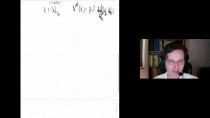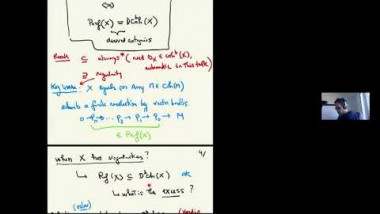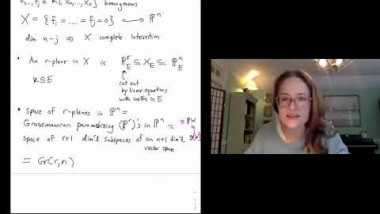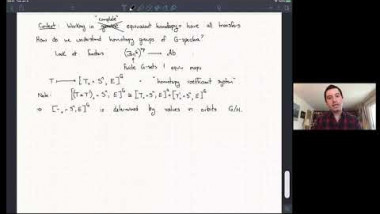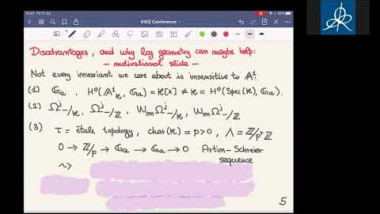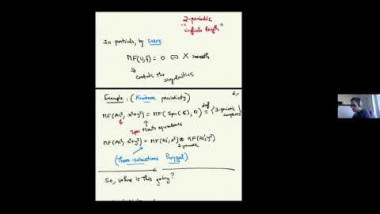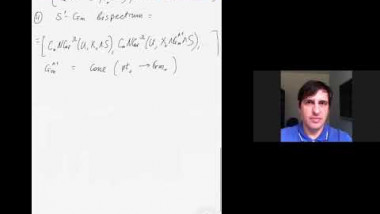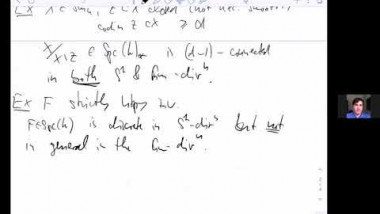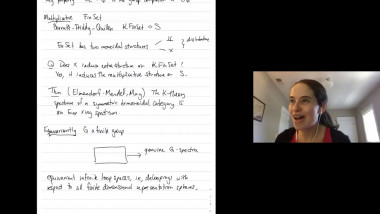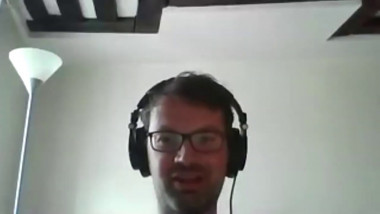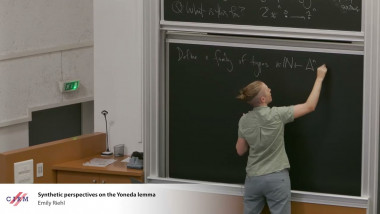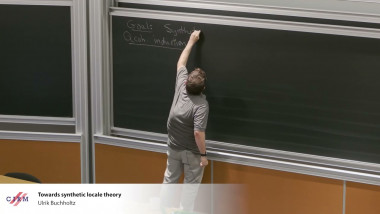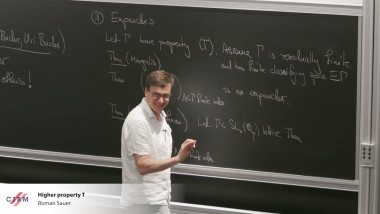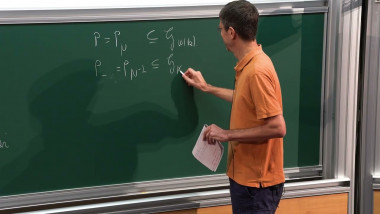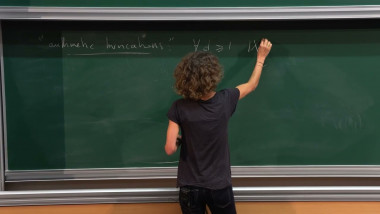2/3 Motivic and Equivariant Stable Homotopy Groups
Also appears in collection : Daniel Isaksen - Motivic and Equivariant Stable Homotopy Groups
Notes: https://nextcloud.ihes.fr/index.php/s...
I will discuss a program for computing C2-equivariant, ℝ-motivic, ℂ-motivic, and classical stable homotopy groups, emphasizing the connections and relationships between the four homotopical contexts. The Adams spectral sequence and the effective spectral sequence are the key tools. The analysis of these spectral sequences break into three main steps: (1) algebraically compute the E2-page; (2) analyze differentials; (3) resolve hidden extensions. I will demonstrate a variety of techniques for each of these steps. I will make precise the idea that ℂ-motivic stable homotopy theory is a deformation of classical stable homotopy theory. I will discuss some future prospects for homotopical deformation theory in general.
In the course of the talk, I mentioned that cellular ℂ-motivic homotopy theory is a deformation of classical stable homotopy theory. More generally, Pstragowski has constructed a family of deformations of classical stable homotopy theory. However, there ought to be additional deformations of interest that do not fit into these already known families. In particular, ℝ-motivic homotopy theory and C2-equivariant homotopy theory ought to be such deformations. Is there a more general theory of deformations of homotopy theories that allows for these examples? See Piotr Pstrągowski, Synthetic spectra and the cellular motivic category, arXiv:1803.01804 for more details.











